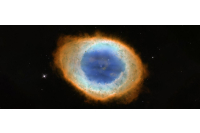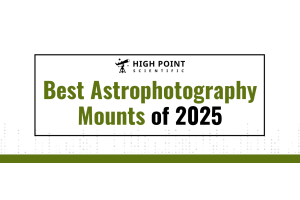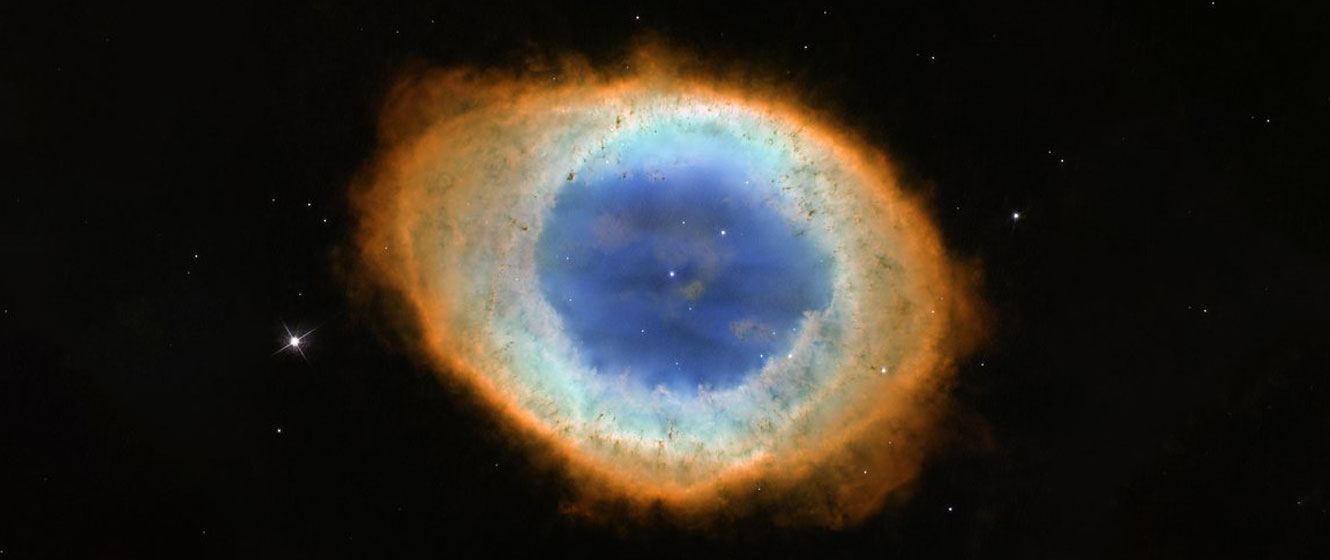
In essence, a nebula is a cloud of gas and dust in space; in fact, the word itself is derived from Latin and means “mist” or “cloud” - and when it comes to astronomy, there couldn’t be a more apt description. There are four primary types of nebulae: diffuse nebulae (or, simply nebulae), dark nebulae, planetary nebulae, and supernova remnants.
Diffuse nebulae appear as ill-defined misty patches in the sky and are typically named after objects or creatures they resemble. For example, there’s the Lagoon Nebula in Sagittarius or the Ring Nebula in Lyra. A diffuse nebula is where stars are born and, as such, you’ll often see a cluster of young, blue-white stars embedded within the nebula itself. Over time, these stars will eventually leave their stellar nursery and drift apart.
Dark nebulae are similar to diffuse nebulae, but they have a much higher concentration of dust. This dust then blocks light from stars both within and behind the nebula, causing the nebula to appear dark as a result. Not surprisingly, dark nebulae can be very hard to observe and are best seen in photographs as cameras can be much more sensitive to light than the human eye.
Whereas a diffuse nebula signifies the birthplace of the stars, a planetary nebula could almost be considered a star’s tombstone. There are a number of ways that a star’s life could end, but lower mass stars (such as the Sun) will form a planetary nebula. As the star nears the end of its life, it ejects its outer layers into space. We then see the glowing shell of ionized gas that formed as a result.
Planetary nebulae are so-called because their circular shape often resembles the disc of a planet when observed through a telescope. M57, the Ring Nebula, is a fine example of a planetary nebula.
Another way in which a star might die is as a supernova. This happens when a larger star no longer has the mass it needs to prevent itself from collapsing, and when that happens, a supernova occurs. As the star implodes, its remnants are thrown outward by the force of the explosion and, years later, we see those remains as a faint, wispy nebula.
The Owl Nebula
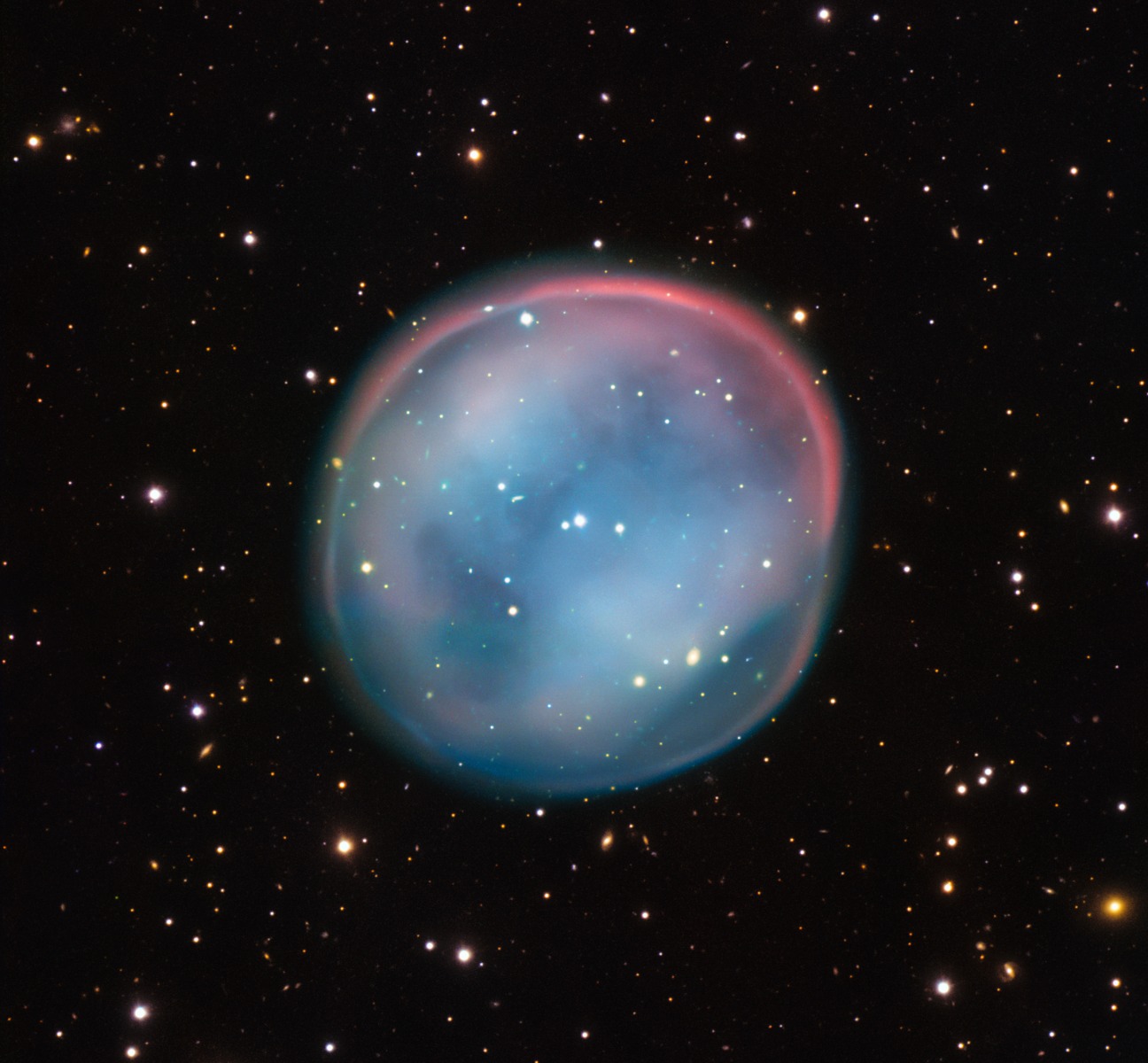
Image Credit: ESO
Regardless of the type of nebula you’re observing, they can appear faint, wispy, and difficult to observe. It’s, therefore, best to use a filter to help make the nebula more apparent. For example, an O-III filter (such as the Thousand Oaks LP-3 Nebula Filter Oxygen III) will block light coming in from unwanted frequencies (eg, those associated with light pollution) but will allow the light to pass through at the frequencies typically associated with nebulae.
As a result, the filter will increase the contrast between the nebula and the background sky, allowing you to see more detail than you would otherwise.
Springtime Planetaries
There aren’t very many nebulae visible in the spring sky, but there are two planetaries you potentially see. If you’re familiar with the Big Dipper, you won’t have any problems locating our first planetary. The Owl Nebula can be found very close to Merak, one of the two stars (along with Dubhe) that point to Polaris, the Pole Star.
Like many planetaries, the Owl is not an easy thing to see. It’s relatively large, but that means its light is scattered over a wider area, making it harder to observe. It’s detectable with a small telescope at low power, but you’ll be lucky to see anything more than a very faint, gray circular patch with just a hint of blue. If you want to see the dark areas that give the nebula its name, you’ll need a large scope and a high magnification.
The second spring planetary is smaller and brighter and is, therefore, a little easier to observe. Unfortunately, it’s not so easily found as it lies among the relatively faint stars of Hydra, the Water Snake. NGC 3242 is named the Ghost of Jupiter because it looks like a pale version of the giant planet (and it’s a good example of why these types of nebulae are known as planetaries).
You’ll find it a little less than two degrees to the south of Mu Hydrae, a magnitude 3.8 star that lies 29 degrees almost due south of Regulus, the brightest star in Leo, the Lion. Since the nebula appears about the same size as Jupiter through a telescope, you’ll need to use a high magnification (over 100x).
Through a small telescope, the nebula shows a small but bright disc with a blue tint, while the nebula takes on a more elongated appearance when observed through a mid-sized scope. Look carefully at the center of the nebula and you’ll also be able to see the dying star from which the nebula originates.
Turn a large scope toward it and you’ll notice that the star appears at the center of a dark oval area, which is itself surrounded by a reasonably bright ring and a darker outer ring. With an increase in aperture, you should also see a deeper blue tint to the nebula.
The Ghost of Jupiter
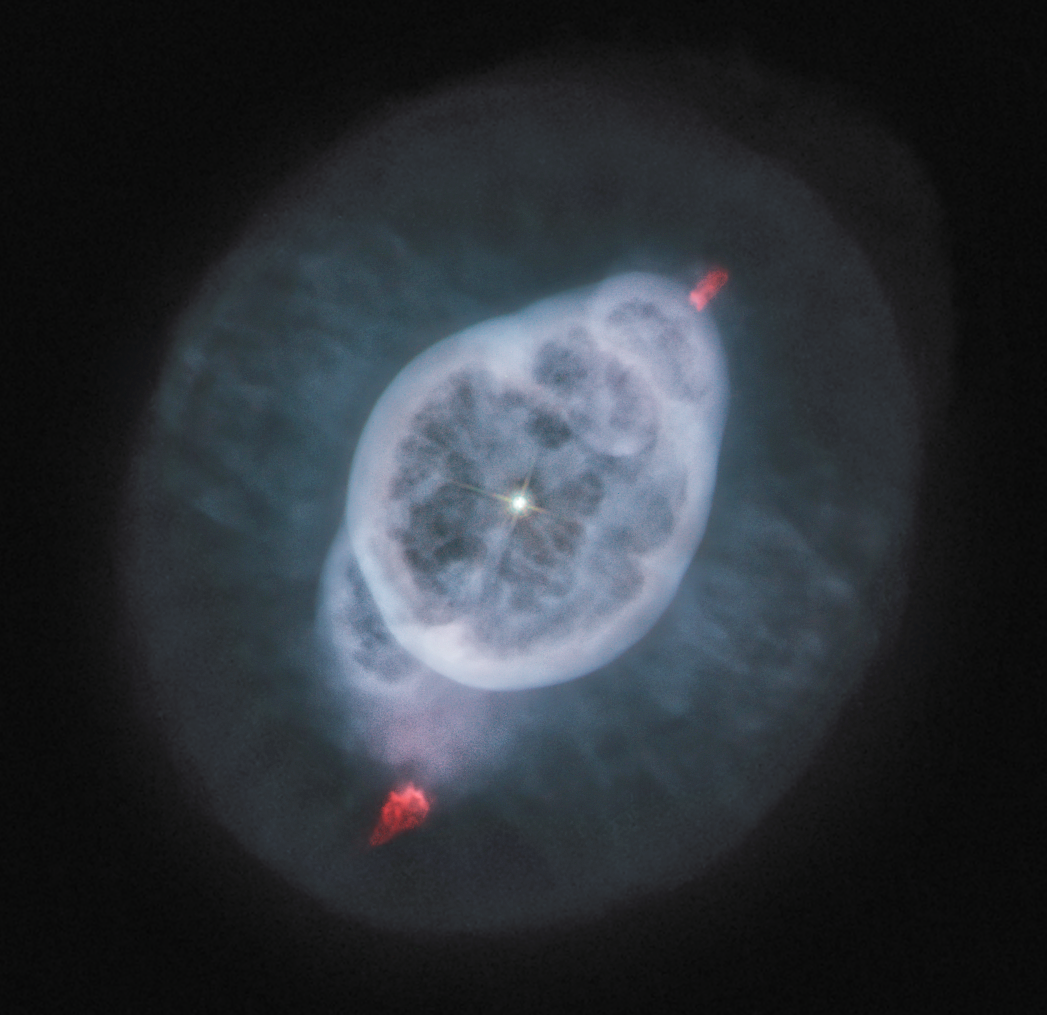
Image Credit: Judy Schmidt
Nebulae for Warm Summer Nights
Our two nebulous targets for summer are a little easier to spot. Just as the constellation Ursa Major has the Big Dipper, so the constellation Sagittarius has the Teapot. This group of bright stars can be seen over the southern horizon at around midnight during July nights, and its spout can act as a convenient marker for M8, the Lagoon Nebula. You’ll find the nebula about five and a half degrees to the west of Kaus Borealis, the star that marks the top of the teapot’s lid. Since this is a large and reasonably bright nebula, you won’t need a lot of power to observe it, but you’ll certainly benefit from using a larger aperture.
A small telescope will show that the nebula is split in two, with the western hemisphere being brighter and more apparent. The dark band that separates the two halves is a little irregular in shape and is slightly curved in places. Look carefully and you may notice a faint, greenish tint to the nebula. More obvious are the scattered clusters of stars within each hemisphere, with the stars of the eastern hemisphere being more prominent than their western counterparts.
A mid-sized scope makes the dark band that divides the nebula more apparent and more clearly defined, but you may need a large scope to see some of the finer details within the nebula itself. Attaching an O-III filter to your eyepiece will increase the contrast and make the nebula brighter, while also dimming the light of the stars. This will allow you to see some texture in the southeastern area of the nebula and thinner, dark stripes running adjacent to the dark band that runs through the center.
If there’s one planetary nebula that’s easily found and observed in the summer, it’s M57, the Ring Nebula, and it’s hard to think of a planetary nebula that’s more conveniently located. It can be found in the constellation of Lyra, the Lyre, roughly midway between Sheliak (Beta Lyrae) and Sulafat (Gamma Lyrae) and appears as a faint, fuzzy star at low power.
Its circular nature first becomes apparent at around 50x, with a small telescope revealing a doughnut-shaped disc and central “hole” at close to 100x. Mid-sized scopes show an ill-defined edge at each end of its east-west axis.
For the most part, M57 looks like a gray smoke ring in space, but if you want to see any hint of its blue-green color, you’ll need a large scope. You may also notice some variation in brightness across its disc and that the hole isn’t quite as dark as the background sky.
The Ring Nebula
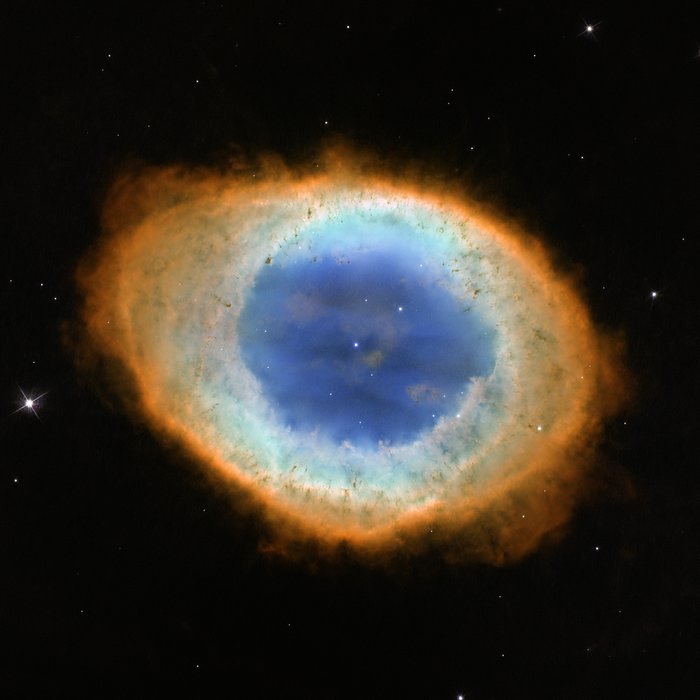
Image Credit: NASA, ESA, and C. Robert O’Dell (Vanderbilt University)
Unfortunately, the star that formed the nebula is only visible in the largest apertures and under the best conditions, but this is still one planetary that should be on everyone’s summer observing list.
A Bright Blue Planetary for Autumn
Like the spring, there are no diffuse nebulae that are easily found in the fall, but the longer nights hold the promise of a bright planetary.
The Andromeda Galaxy might be the most famous object to be found within the constellation it’s named for, but there’s another telescopic target that’s sometimes overlooked: NGC 7662, the Blue Snowball.
Unlike last season’s Ring Nebula, the Blue Snowball isn’t so easily found, as it’s located far away from the bright stars of the constellation. There are three faint stars - Iota, Kappa, and Lambda Andromedae - in a curved line just slightly to the north, and locating these stars can help you to locate the nebula.
The nebula itself can be found very close to an even fainter star, 13 Andromedae, and has the appearance of a hazy star at low power. Like most planetaries, the Blue Snowball is a target that really requires the use of high magnification, so you’ll ideally need a large scope with a long focal length to make the most of it.
Consequently, you may not see much more than a small, blue disc with a small scope, but a mid-sized scope at a magnification of over 200x will also show a conspicuous inner ring encircling the dark, hazy center.
NGC 7662
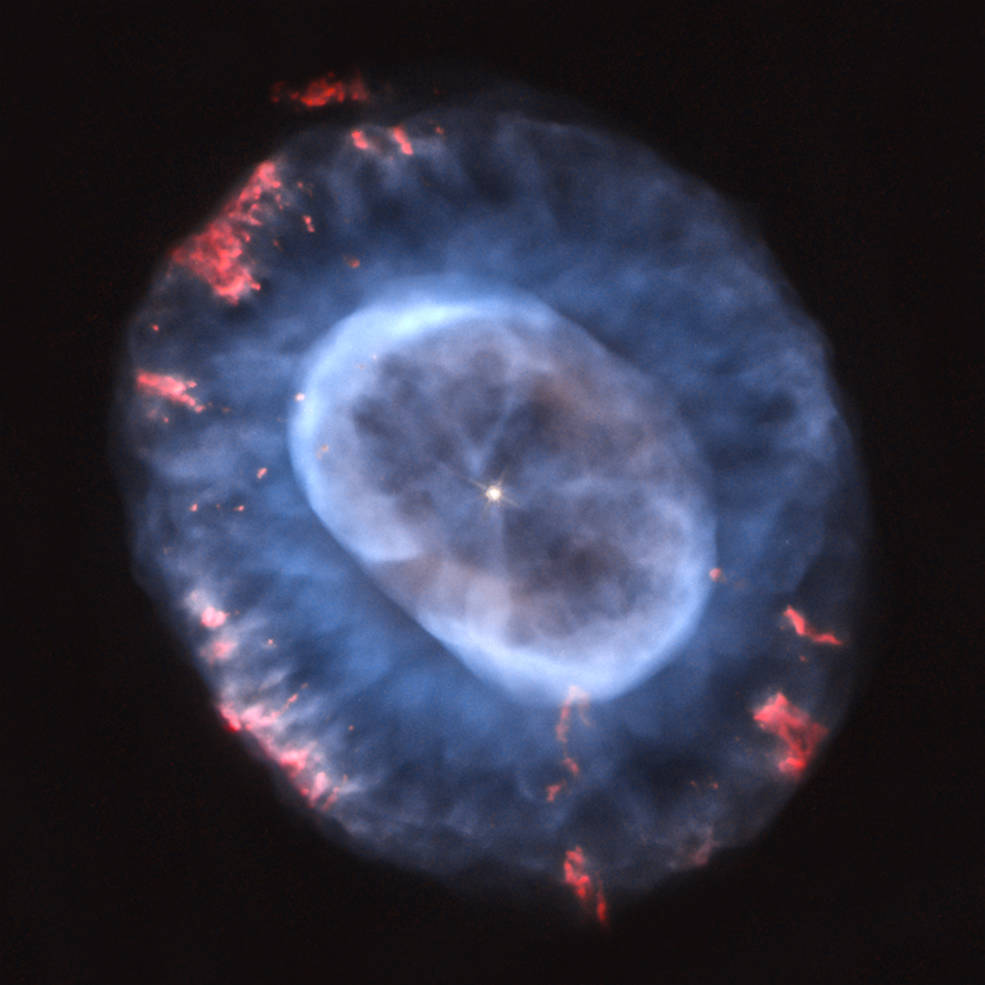
Image Credit: NASA, ESA, and A. Hajian (University of Waterloo)
Winter’s Treasure Trove of Nebulae
Supernova remnants are typically difficult to visually observe, but if you’re curious to see one for yourself there is one that’s visible throughout the entire winter - and it’s relatively easily found too. If you’re familiar with the constellation Orion, you can use the three stars of his belt to reach Taurus, the constellation in which it’s located.
Draw a line upwards through the belt and you’ll come to Aldebaran, the coppery star that marks the red eye of the bull. You’ll next need to locate the star Zeta Tauri, which marks the tip of one of the beast’s horns. Just a degree to the north of this star is our target - M1, the Crab Nebula.
This is what remains of a star that exploded in 1054 AD, an event that was recorded by Chinese astronomers of the time. Unfortunately, it’s not an object that shows much detail through amateur scopes, but there’s the satisfaction of knowing you’re looking at what’s left of a star that exploded nearly a millennia ago!
It’s barely seen through a small telescope at 35x and appears as a uniformly dark, fingerprint-shaped hazy patch with very little detail visible. (Tapping the telescope tube can make the nebula easier to spot, as our eyes are better able to detect movement.)
It’ll appear brighter through a mid-sized scope, with a magnification of around 100x revealing some texture, while a large scope will help to show more.
If the Crab Nebula has left you feeling a little underwhelmed, the Great Orion Nebula certainly won’t disappoint. It’s very easily found, just below the three stars of Orion’s belt, and is bright enough to be seen with the naked eye from even suburban skies.
The Crab Nebula
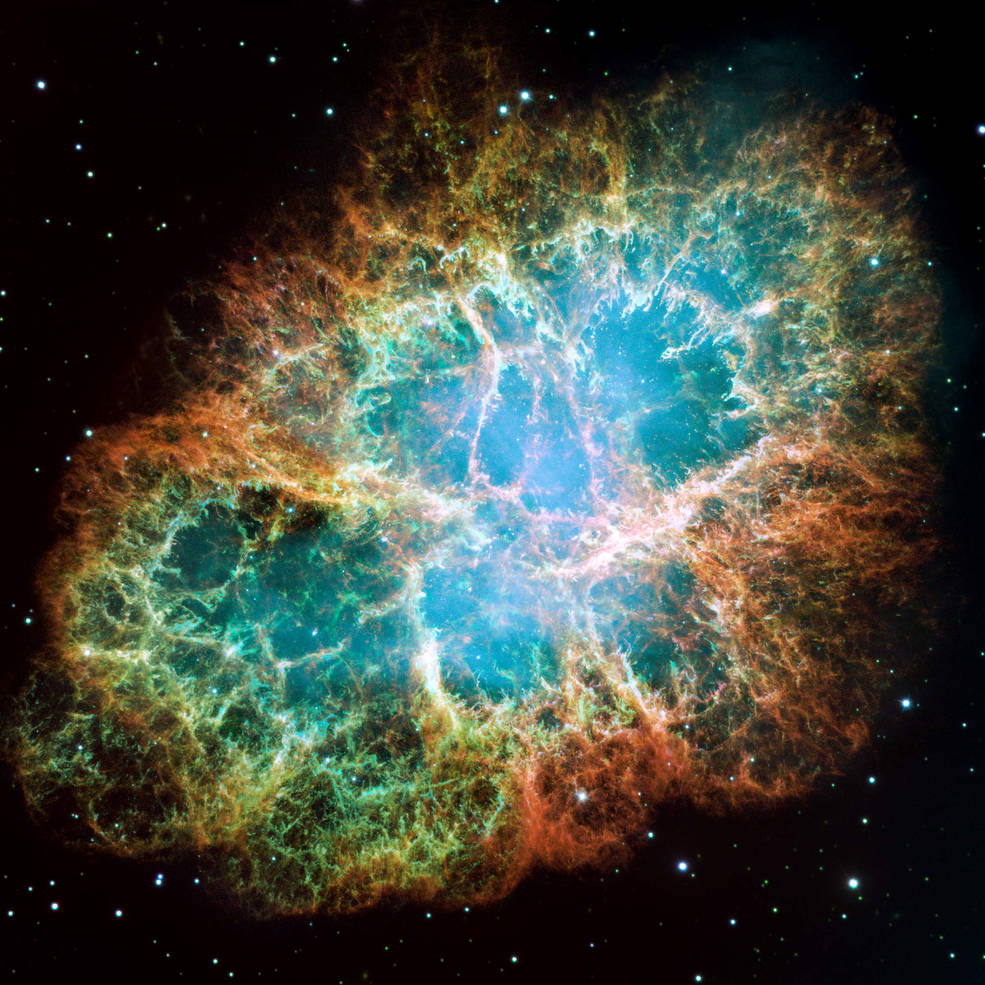
Image Credit: NASA, ESA, J. Hester and A. Loll (Arizona State University)
The Orion Nebula is the best of its kind from the northern hemisphere, with even a small telescope providing some outstanding views. A low-powered eyepiece will show a greenish tint to the cloud and some texture along the southern edge. The Trapezium, a group of four newborn stars, glints brilliantly at the heart of the nebula.
You’ll also see the Fish Mouth, a dark cloud of dust that appears to form the shape of a fish’s head with its mouth open, while barely visible to the nebula’s south is M43, a small, circular patch of nebulosity with a dim star at its center.
Mid-sized scopes will allow you to see more of both M43 and the Orion Nebula itself, with more complex patterns and streaks becoming apparent. With a large scope, you’ll be able to truly explore the nebula; it may be difficult to fit the entire structure within the field of view, but a higher power eyepiece provides you the opportunity to truly dive into the depths of this misty pool.
Regardless of the size of your scope or the magnification you’re using, it’s always well worth taking the time to appreciate the nebula and explore it thoroughly.
There’s one last nebula for you to enjoy during the long winter nights, and this one’s a planetary. NGC 2392, the Clown Face Nebula, is conveniently located a little over two and a quarter degrees southeast of the star Wasat (Delta Geminorum) and within the same binocular field of view.
You’ll find it next to an orangish star; this helps to identify the nebula as it’ll appear as a tiny, hazy star that glows with a faint blue light at low power. A small telescope at around 100x will show a small, circular blue-green disc with a tiny bright center.
Doubling the magnification with mid-sized and large scopes allows the central star to become more apparent, with a faint, dark ring encircling the center about halfway out to the nebula’s edge.
Here’s a neat disappearing trick for you; if you can see the central star, stare at it until the nebula disappears. Then quickly look away and the nebula will suddenly pop back into view!
NGC 2392
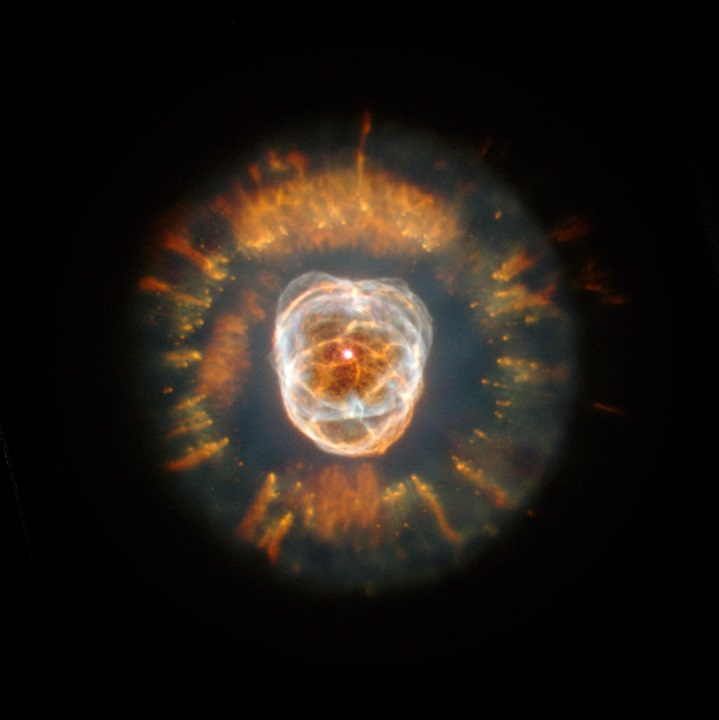
Image Credit: NASA, Andrew Fruchter and the ERO Team

Learn More
Interested in learning more about nebulae, galaxies, planets, and more? Not sure where to begin? Check out our Astronomy Hub!
This Article was Last Updated on 07/25/2023





